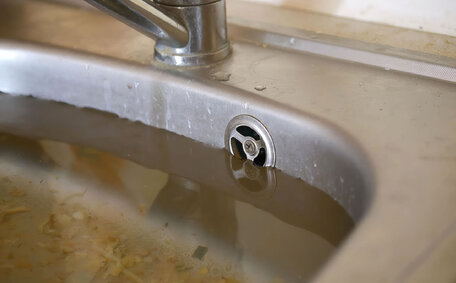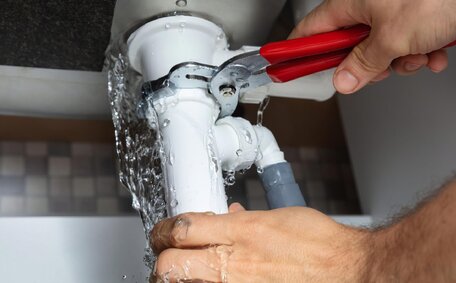Understanding Trenchless Pipe Relining
Trenchless pipe relining renews ageing or damaged pipes without the need for excavation, offering a modern alternative to traditional pipe replacement. It involves inserting a resin-saturated liner into the existing pipe and curing it to form a smooth, jointless interior. As the liner hardens, it seals cracks and restores structural stability.
Emerging in the 1970s, trenchless pipe relining has since become popular due to its cost-effectiveness and low-disruption approach. Today, trenchless relining is a go-to solution for ageing infrastructure issues faced by many Sydney suburbs like Newtown.
Trenchless relining avoids the need to excavate yards, driveways, or roads, offering a longevity boost to pipes with a sustainable solution that can extend their life by over 50 years. The epoxy or PVC liners used are also environmentally inert, preventing further pipe corrosion or leakage.
The method further benefits from reduced noise and dust, as well as lower restoration costs compared to conventional excavation. Moreover, relining jobs are generally completed within a day, exemplifying efficiency.
How Trenchless Relining Works
Trenchless pipe relining is a multi-step process handled by specialists like Newtown Plumbing. The key steps are:
- CCTV Pipe Inspection: A camera probe is fed through the pipes to identify damage and measure the interior dimensions.
- High-Pressure Cleaning: The pipes are blasted with water jets under high pressure to clean out debris and prepare the surface.
- Installing Pipe Liner: A felt liner saturated with epoxy resin is inserted into the pipe and inflated to fit using steam and air pressure.
- Curing Pipe Liner: Infrared lamps, hot water or ambient air cures the resin into a smooth, jointless pipe lining that seals cracks and restores structural integrity.
Very minimal excavation work is required in small sections only. The rest of the process uses CCTV cameras and liner installation equipment fed through existing pipe access points.
Within a day, old pipes are restored from the inside-out with minimal disruption to landscapes or property.
The Role of CCTV Pipe Inspection
Conducting a CCTV pipe inspection is an essential initial phase in every trenchless relining project. At Newtown Plumbing, we use state-of-the-art CCTV cameras on flexible cables to get a detailed look inside drains and sewers.
It enables technicians to pinpoint defects, damage or blockages within the pipes with precision. This process also provides essential measurements that inform the design of a precisely tailored pipe liner.
Without this diagnostic visibility, it would be impossible to appropriately plan a pipe relining installation. However, with CCTV cameras we can thoroughly assess the current state of underground pipes and determine the exact relining solution needed.
Additionally, customers receive visual evidence of any detected pipe issues, enhancing transparency. This builds trust and helps validate why relining is the preferred repair method over traditional pipe replacement digging.
The insights gathered enable our team to strategically move forward based on real pipe condition data rather than guesses.
High-Pressure Pipe Cleaning
Before a new trenchless pipe liner can be installed, the existing pipe system must be thoroughly cleaned. At Newtown Plumbing, we use industrial-strength high-pressure water jetting for this purpose.
Powerful jet sprayers propel water at up to 5000 PSI directly into pipes, scraping away years of accumulated scale, grease, tree roots and other debris. Rotating nozzles provide 360 degree cleaning action to leave pipe walls smooth and ready for relining.
High-pressure water blasting is an essential preparation step as even small amounts of residue can prevent proper curing and bonding of the new epoxy or PVC pipe liner we later install.
By investing time on comprehensive high-pressure jet cleaning beforehand, we ensure no impurities compromise the long-term effectiveness of the pipe relining process. It represents our commitment to proper procedural diligence from start to finish.
Additionally, the jets eliminate tuberculation, which are the rough mineral deposits that build up inside pipes. This enables the new liner to restore full flow capacity and hydraulic efficiency.
Thorough pre-preparation provides peace of mind that the relined pipes will function optimally for decades.
Installing and Curing the New Pipe Liner
Following comprehensive inspection and cleaning, installation of the new trenchless liner commences. Depending on the project, we utilise either epoxy or PVC liners, which Newtown Plumbing selects based on specific project requirements.
To insert the liner, it is saturated with a special resin and compressed to a smaller diameter. It is then fed through the pipes and expanded using steam until it presses tightly against the pipe walls.
The liner is left to cure in place either naturally at ambient temperatures or by applying gentle heat from hot water or infrared lighting. As the resin hardens, it creates a smooth, jointless new pipe lining.
This seamless structure seals cracks and restores structural stability to the pipes for decades. Trenchless drain pipe relining effectively renews drainage systems from the inside out with a durable epoxy or PVC barrier.
At Newtown Plumbing, all our trenchless relining installations come with long-term guarantees. We stand by the quality, effectiveness and 50+ year lifespan of this pipe renewal method.
Benefits of Trenchless Relining
Trenchless pipe relining presents a range of benefits when compared to traditional pipe replacement techniques:
- Cost Savings - Pipe relining reduces expenses by 60% compared to digging trenches for new pipes.
- Minimal Landscape Disruption - Very little excavation is needed, reducing the risk to damage your gardens, driveways and landscaping.
- Faster Repair Times - The average trenchless relining job is completed in just one day with minimal disruption.
- Increased Pipe Durability - Epoxy and PVC liners restore structural integrity, extending pipe lifespan by over 50 years.
At Newtown Plumbing, we take pride in providing effective plumbing repairs while preserving the local environment. With trenchless relining, pipe renewal is achieved without compromising the landscaping, reflecting a sustainable modern alternative.
Types of Pipes Suitable for Relining
Trenchless relining can renew almost any type of pipe material more effectively than traditional methods, by installing a protective epoxy or PVC liner inside it. Trenchless relining is a versatile solution applicable to both metallic and non-metallic pipes:
- Cast Iron - Ageing cast iron drains and sewers can be restored instead of expensive full replacement.
- PVC/PE/PP - Cracked or broken plastic piping is easily relineable for minimal cost.
- Concrete - Perfect for rehabilitating concrete stormwater and sewage pipes.
- Galvanised Iron - Relining offers an affordable alternative to replacing rusting gal iron pipes.
- Brick/Ceramic - Old brick tunnels, subsurface drains and ceramic pipes can all be restored.
So whether it’s under the kitchen, beneath driveways or deep underground - there are cost-effective trenchless relining solutions available from Newtown Plumbing.
Relining significantly reduces costs and disruption across various pipe systems, particularly when compared to the extensive disturbances often caused by traditional dig-and-replace methods.
Relining Materials and Methods
Epoxy resins and PVC are the two primary materials used for trenchless pipe lining.
Epoxy resins form a robust, corrosion-proof lining able to withstand decades of use. The liquid resin saturates a felt liner which is inserted into pipes and expands to seal cracks and gaps. Once hardened, it creates a smooth, jointless pipe lining able to last over 50 years.
PVC liners work similarly but use folds in the material to conform to variations in pipe diameter. Steam pressure pushes it firmly against pipe walls before ambient temperature curing. The durable plastic barrier is also inert and prevents buildup inside restored pipes.
Installation methods vary between spot repairs, partial relining and whole line renewal. The most common technique is CIPP or Cured-In-Place Pipe relining.
This method involves inserting a resin-impregnated felt tube throughout the pipe’s length, employing water or air pressure for expansion. Once set in place, gentle heat cures the liner. No trenches or heavy machinery are involved.
Compared to traditional pipe replacement methods, CIPP relining is a method which causes minimal site disruption or restoration costs. It also has almost zero environmental impact - aligning with sustainability efforts in local government areas like Newtown.
When to Consider Trenchless Relining
There are several telltale signs that your pipes may be in need of trenchless relining. At Newtown Plumbing, our team is skilled at evaluating if this is the most suitable solution based on factors like drain pipe deterioration:
- Ageing Pipes: Old cast iron, concrete or galvanised iron pipes prone to cracks, leaks and blockages.
- Reduced Water Flow: Noticeable loss of water pressure or drainage capacity indicating interior corrosion.
- Pipe Noise: Clanking, banging or gurgling from failing pipe joints or partial blockages.
We advocate for pipe inspections post major flooding events that could jeopardize pipe joint integrity. Roots infiltrating cracked drains are another trigger to seek assessment and relining.
By catching and relining deteriorated pipes early, extensive pipe repairs can be avoided. We help clients choose the most cost-effective pipe repair solutions tailored to their unique property needs.
So don’t hesitate to contact Newtown’s trenchless relining specialists if you suspect your pipes are ageing. We have the CCTV and plumbing expertise to evaluate if lining renewal is your best option.
The Future of Trenchless Plumbing
The future is bright for trenchless pipe relining as the technology continues advancing in capability and scope. With sustainability at the forefront of infrastructure initiatives, demand has rapidly grown for minimally invasive pipe renewal solutions.
Continual product innovations are expanding trenchless applications beyond drain repairs to other pipe systems. Advancements like sensor-integrated liners able to detect leaks promise to further enhance functionality.
There is also extensive research ongoing into liner materials like graphene-reinforced composites for extreme durability. Robotic CCTV drainage inspection equipment further improves diagnostic accuracy.
As trenchless relining becomes more recognized by municipalities, its application has started to surpass traditional methods in some areas, delivering distinct advantages, especially when existing infrastructure has been disrupted.
At Newtown Plumbing, we actively follow all the latest industry developments, ensuring we provide better solutions than traditional options. We put cutting-edge technologies through rigorous testing to provide superior services that benefit local residences and businesses.
We also proudly mentor upcoming tradespeople on best practise techniques to encourage greener solutions. Furthermore, we prioritise educating customers about innovative pipe renewal options, expanding awareness.
While traditional open trench methods still play a partial role, it’s clear trenchless relining will dominate future plumbing. As pioneers and advocates, Newtown Plumbing looks forward to shaping this sustainable shift both locally and abroad.






